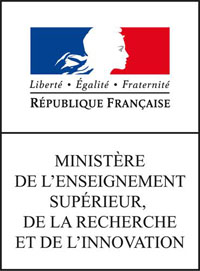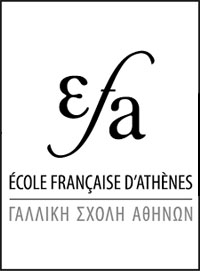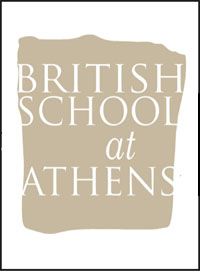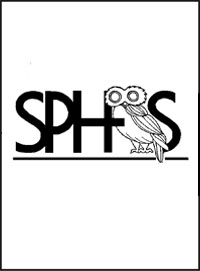Middle Kalamas Basin - 2015
Informations Générales
Numéro de la notice
17710
Année de l'opération
2015
Chronologie
Mots-clés
Nature de l'opération
Institution(s)
Εφορεία Αρχαιοτήτων Θεσπρωτίας (Éphorie des antiquités de Thesprotie)
Εθνικό και Καποδιστριακό Πανεπιστήμιο Αθηνών (Université Nationale et Kapodistrienne d'Athènes)
Toponyme
Notices et opérations liées
2015
Description
Middle Kalamas Basin. Georgia Kourtesi-Filippaki, Vangelio Tourloukis, Dimitris N. Sakkas, Foivos Michos-Rammos (National and Kapodistrian University of Athens) report on the final year of a five-year survey in the area between Kastri and Agios Vlassis in the W to Palaiochori and Ano Palaioklisi in the E.
The research programme focussed on geoarchaeological, involving the collaboration of archaeologists and geomorphologists working in the area. The total area investigated was divided into four zones (on the basis of geomorphological criteria), and tracts walked by teams of seven or eight within these zones. The spacing between walkers began at 2–3m but increased to 5m where the shape of the tract required (fig. 1). All objects found on the surface were collected.
Zone 4 was investigated this year, SW of Itulka and E of Igoumenitsa (fig. 2). 176 tracts were sampled in this area.
Zone 4a covered 50 tracts (4001–4034, 4094–4109) and included in its area abandoned houses of the Ottoman period and the church of Agios Athanasios.
Zone 4b covered 70 tracts, 19 of which were in the mountainous area of Pithari-Korifi (4084, 4087–4093, 4143–4145, 4149–4156), and 51 of which were in the sloping areas S of Drimitsa (4035–4083, 4085–4086).
Zone 4c covered 56 tracts, both on the northern end of the mountain ridge (4157–4163) and in Varathi-Plagia on the slopes E of the mountain (4110–4148).
The whole zone was rich in finds, mainly stone artefacts and pottery, 3900 objects in total.
Many of the stone artefacts collected in Zone 4b were dated to the Middle Palaeolithic period. Within zone 4c, two Palaeolithic period sites were identified. Many of the ceramics were glazed post-Byzantine pottery, some of which were imitations of Italian wares circulating in the eighteenth and nineteenth centuries. Parts of pithoi were also found.
Parts of Zones 1, 2 and 3 were re-investigated. Tracts 1121–31 were walked in Zone 1, yielding 282 stone artefacts and 16 sherds; tracts 2210, 2217, 2218, 2245, 2295 and 2296 were walked in Zone 2, yielding 30 stone artefacts; and in Zone 3 the area on the W boundary of the zone were explored in tracts 3057–3076, yielding 369 stone artefacts and 26 ceramics.
The main aim of the research was to situate Palaeolithic artefacts in their geological context. One major conclusion was that for all sites at which stone tools were found, there were reddish sediment deposits. This allowed for the establishment of a stratigraphic sequence of sites located in such a geological environment. Future research will sample, through excavation, to obtain absolute dates.
The research programme focussed on geoarchaeological, involving the collaboration of archaeologists and geomorphologists working in the area. The total area investigated was divided into four zones (on the basis of geomorphological criteria), and tracts walked by teams of seven or eight within these zones. The spacing between walkers began at 2–3m but increased to 5m where the shape of the tract required (fig. 1). All objects found on the surface were collected.
Zone 4 was investigated this year, SW of Itulka and E of Igoumenitsa (fig. 2). 176 tracts were sampled in this area.
Zone 4a covered 50 tracts (4001–4034, 4094–4109) and included in its area abandoned houses of the Ottoman period and the church of Agios Athanasios.
Zone 4b covered 70 tracts, 19 of which were in the mountainous area of Pithari-Korifi (4084, 4087–4093, 4143–4145, 4149–4156), and 51 of which were in the sloping areas S of Drimitsa (4035–4083, 4085–4086).
Zone 4c covered 56 tracts, both on the northern end of the mountain ridge (4157–4163) and in Varathi-Plagia on the slopes E of the mountain (4110–4148).
The whole zone was rich in finds, mainly stone artefacts and pottery, 3900 objects in total.
Many of the stone artefacts collected in Zone 4b were dated to the Middle Palaeolithic period. Within zone 4c, two Palaeolithic period sites were identified. Many of the ceramics were glazed post-Byzantine pottery, some of which were imitations of Italian wares circulating in the eighteenth and nineteenth centuries. Parts of pithoi were also found.
Parts of Zones 1, 2 and 3 were re-investigated. Tracts 1121–31 were walked in Zone 1, yielding 282 stone artefacts and 16 sherds; tracts 2210, 2217, 2218, 2245, 2295 and 2296 were walked in Zone 2, yielding 30 stone artefacts; and in Zone 3 the area on the W boundary of the zone were explored in tracts 3057–3076, yielding 369 stone artefacts and 26 ceramics.
The main aim of the research was to situate Palaeolithic artefacts in their geological context. One major conclusion was that for all sites at which stone tools were found, there were reddish sediment deposits. This allowed for the establishment of a stratigraphic sequence of sites located in such a geological environment. Future research will sample, through excavation, to obtain absolute dates.
Auteur de la notice
Michael Loy
Références bibliographiques
ADelt 70 (2015), Chr., 833–8
Date de création
2022-01-24 16:40:29
Dernière modification
2022-01-24 16:47:43








